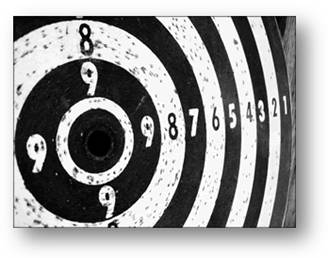Nature, role and importance of objectives
Form of aims and objectives
 It is necessary to understand two pairs of terms before we go any further.
It is necessary to understand two pairs of terms before we go any further.
- Strategy - this is a long-term plan illustrating how the business will achieve its corporate objectives. Strategic objectives are significant long-term goals. They normally relate to key business objectives such as profitability, asset value and market share.
- Tactics - these are the short-term activities carried out on a daily basis to implement the business strategy. It should be possible to arrive at a set of checkpoints when performance can be measured against success criteria.
The next pair of terms looks at the timeframe in which we consider aims and objectives.
- Long-term - the organisation is looking into the future, setting plans over a period of 1- 5 years
- Short-term - this is much closer in time. Tactical objectives may be daily, weekly or monthly. Anything relating to activities below one year is normally called short-term.
Short-term tends to be associated with tactical decisions and activities and long term with strategy, therefore:
The aims of a firm are its strategy. From these are derived tactical objectives. Any firm needs strategic aims so that all its stakeholders know where the business seeks to be. The shorter-term objectives are there to provide immediate targets and motivators for the managers and other employees.
The first, the most basic, and the perpetual goal of any firm is survival. Only after this has been secured can it develop other significant strategic aims. These may include:
- Increased profit
- Greater market share
- Elimination of competition
- Possible takeovers or mergers
- International expansion and market growth
- Corporate image
- Improving quality
Aims and objectives are there for everybody in the firm. They are there to give a target and to act as an encouragement or motivators to staff. They drive decision-making. It is important, therefore, to express them in the correct form of language.
Why have objectives?
It is only with objectives, targets or aims that a firm can know where it is going, and can measure its progress.

Do you really know the difference between aims, objectives and goals? Write what you think, then click Target.
Hierarchy of Objectives
If you would prefer to view this interaction in a new web window, then please follow the link below:

One example of this is Hewlett Packard. To examine their corporate objectives and shared values follow the link below:
